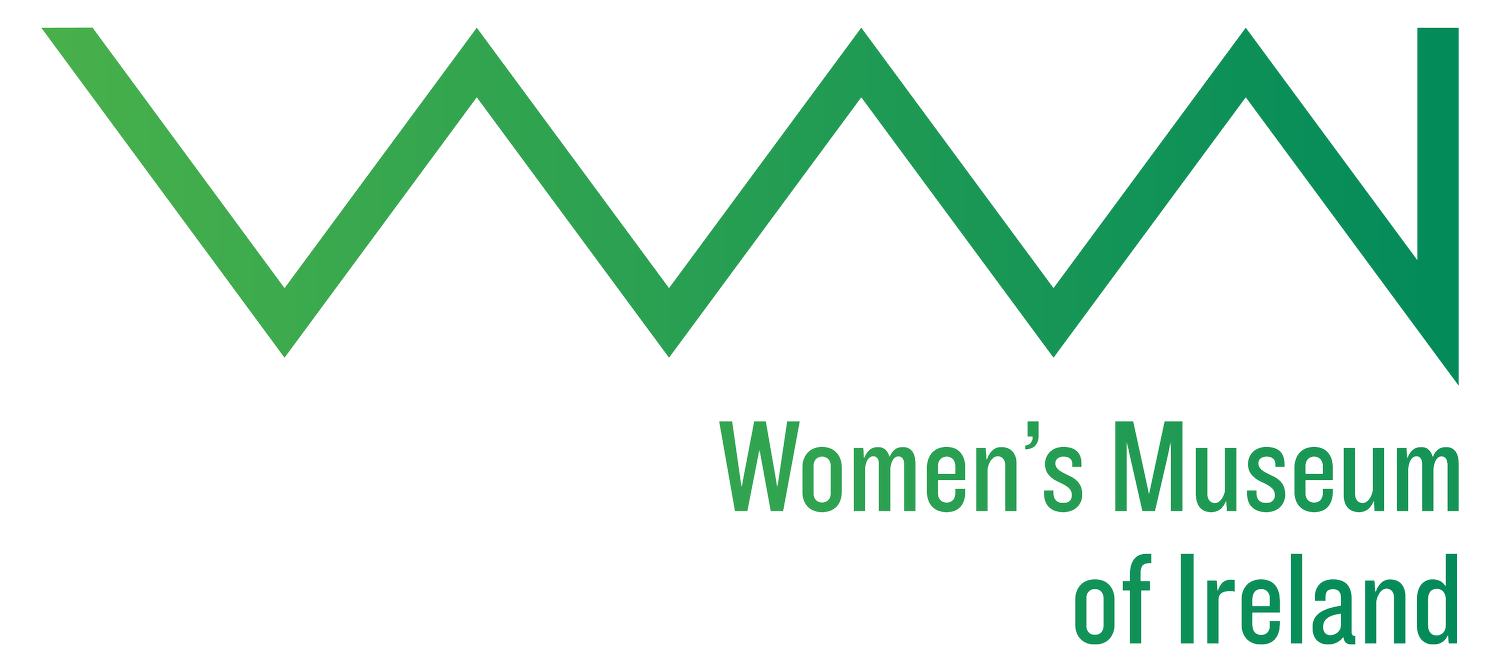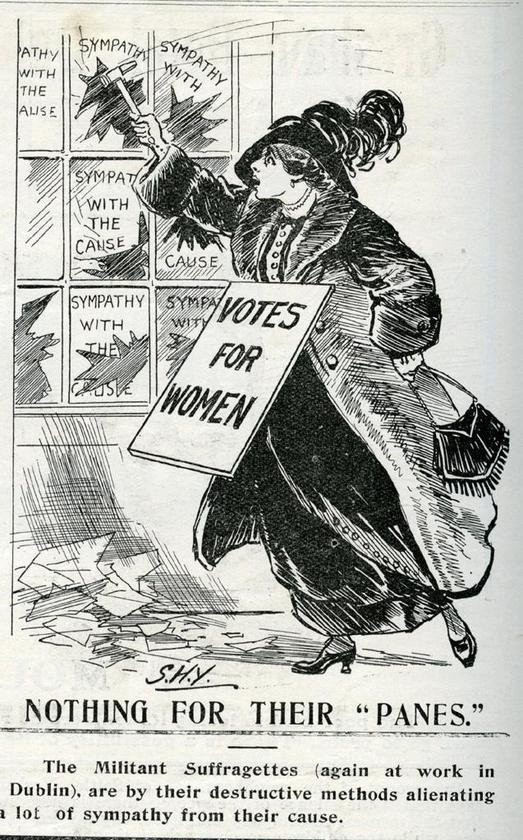‘Did your granny have a hammer?’ - Tracking down the objects of the Irish women’s suffrage movement
Guest blogger Donna Gilligan is seeking assistance in a public appeal to locate surviving objects related to the Irish women’s suffrage movement.
In this decade of centenaries, we will soon approach another important milestone in our national history. 2018 will mark a centenary since women (albeit a limited few) were first granted the right to vote nationally in Ireland. With this anniversary in mind, I have chosen to base my Masters research thesis on exploring and recording the material and visual culture of the Irish women’s suffrage movement. In the early stages of my research, I have been struck by the limited number of surviving objects from the long period of women’s suffrage in Ireland. Initial enquiries have uncovered a relatively small collection of objects in the national and local collections, and I believe that further associated objects may potentially survive in personal collections or as family heirlooms. As part of my research, I am attempting to trace and record information and images on as wide a range of Irish suffrage objects as possible, and am placing an appeal to people who may hold or know of objects of this nature to contact me with details for my catalogue.
I am a material culture historian and a museum archaeologist, with a fascination for exploring the stories which a simple object can tell us through its design, use, and appearance. Objects hide much significant information within their materiality, and can offer us a direct insight into the issues, influences and industry of the contemporary society which produced them.
Objects and images played a key role in the international women’s suffrage movements of the late nineteenth and early twentieth centuries. The international movements are widely recognised for their means of successful political promotion through personal branding, imagery and symbolism, as well as for their significant role in the development of consumerism. This impact is seen through their mass production of promotional collectables and ephemera, their creation of a political uniform, and their clever visual and material advertisement of their cause – all of which served to actively promote and publicise their aim of votes for women.
A relatively large documented collection of related objects and imagery survives from the British and American suffrage movements, and the specific choices and use of this associated material and visual culture has been shown to have significantly influenced the development and successes of their causes, and proved persuasive to wider societal trends. I have long been fascinated by the promotional memorabilia produced by the English suffrage movement – particularly the objects and imagery produced by the Women’s Social and Political Union (W.S.P.U.) – the organisation led by the Pankhurst family. The large catalogue of associated material held by the Museum of London collections document the creation and promotion of a successful brand and an important political message.
The Irish suffrage movement is often considered as significantly different to the wider international suffrage movements due to its occurrence throughout a period of momentous political and national change. During the peak of the movement, Ireland was involved in events relating to the Irish War of Independence, the fight for Home Rule, the emergence of several new political parties, the outbreak of World War I, and the Celtic Revival. Several of the Irish suffragists were also heavily involved with a number of other significant national movements and organisations – such as the Irish Citizens Army, Sinn Féin, Inghindhe na hÉireann, Cumann na mBan, The Gaelic League, the Irish Women Worker’s Union and the Labour party. The Irish suffrage cause was closely associated with, and influenced by, a number of significant cultural, national and political movements, which would potentially have impacted visually, strategically and emotionally on their choice of use of material and visual propaganda and promotion.
A wide range of objects can fall under the heading of the material culture related to this political movement. These can range from badges and lapel pins which advertised prominent suffrage groups such as the W.S.P.U. and the I.W.F.L. (Irish Women’s Franchise League), or replica prison badges worn by former suffragette prisoners at rallies in order to demonstrate their commitment and sacrifice. It also includes sashes, picket signs, flags, banners, placards and display stands used by suffrage activists and demonstrators during public events and rallies. Suffrage fashion and uniform dress also forms a significant part of the material culture.
Further to this, a wide and varied range of promotional objects were mass produced by suffragists in the official colours of the W.S.P.U. – purple, white and green – for use and display in the public sphere, ranging from personal jewellery to tea sets. As well as W.S.P.U. colours, Irish suffragists also used specific national colours – particularly orange and green - in the presentation and production of their objects.
Suffrage memorabilia also often features a large and varied range of printed ephemera, including postcards, Christmas cards, membership cards, flyers, handbills and letters. In addition to this, the material culture of militant suffragettes can be said to include prison charge sheets, prison art and graffiti, and hunger-strike medals. Objects used in militant protests could include chains for securement to railings, hammers and stones used to break windows, or weapons and damaging substances used in the public vandalism of items such as post-boxes and works of art.
By the end of my research, my aim would be to have compiled a relatively thorough record and discussion of the visual and material culture of the Irish suffrage movement by the time of its centenary in 2018. I hope to identify the reasons and meaning behind the choice, style, and use of the Irish suffrage objects and imagery, as well as highlight similarities and differences between the Irish choices and those used by the wider international suffrage movement.
Donna Gilligan is a museum archaeologist and material culture historian who is compiling a research thesis on the visual and material culture of the Irish women’s suffrage movement. The year 2018 will mark the centenary of the first granting of the right of national vote to Irish women. If you have any information or enquiries relating to Irish suffrage objects you can contact her directly at donnapgilligan@gmail.com

